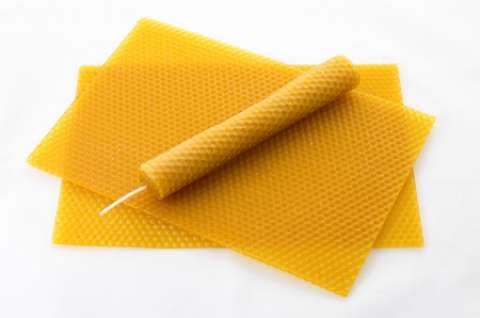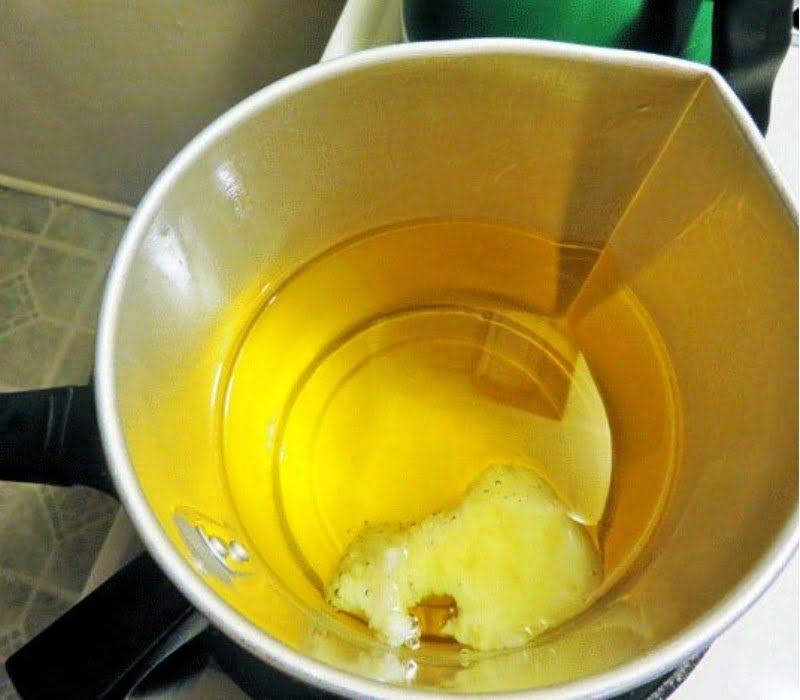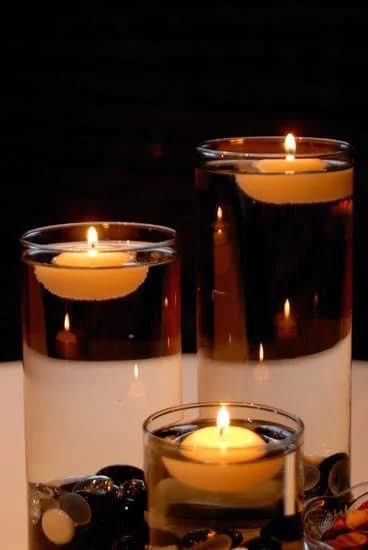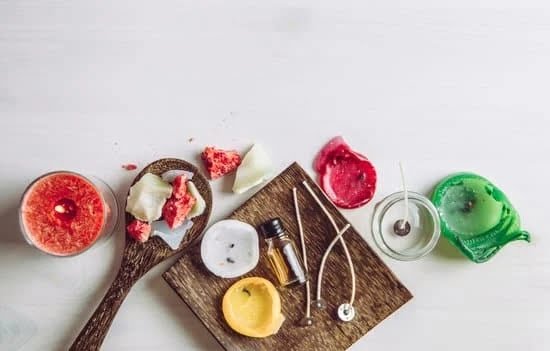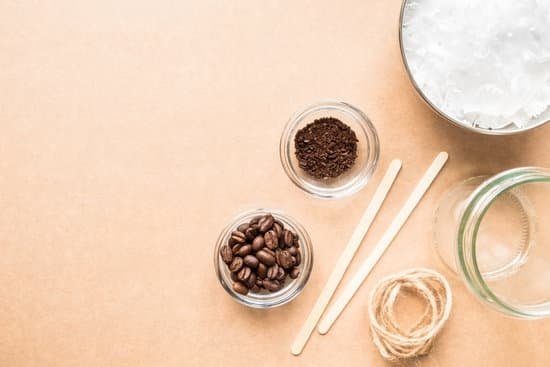Candle making is a delightful craft that allows you to express your creativity while creating beautiful and functional pieces. The scent of a candle can enhance not only the ambiance but also our mood and well-being. While there are various fragrances available on the market, many candle makers have turned to essential oils as an alternative. In this article, we will explore the benefits of using essential oils in candle making and how they can elevate your crafting experience.
Essential oils are concentrated plant extracts that capture the natural aromatic compounds from flowers, leaves, stems, or roots. These oils offer more than just a pleasant fragrance; they possess therapeutic properties that can have positive effects on our physical and emotional health. From promoting relaxation and stress relief to boosting focus and energy, each essential oil brings its own unique set of benefits to your candles.
By incorporating essential oils into your candle making process, you have the power to create personalized scents that cater to your preferences or specific needs. Whether you desire a calming atmosphere for meditation or an invigorating aromatherapy session during your spa night, using essential oils provides endless possibilities for crafting custom scents. Furthermore, these natural ingredients give you peace of mind knowing that they do not contain any synthetic chemicals or toxins often found in commercially-made fragrance oils.
As we delve into this comprehensive guide on using essential oils in candle making, we will cover everything from understanding what essential oils are and how they are extracted to exploring different types of oils suitable for candles.
We will also discuss factors to consider when choosing essential oils, tips for achieving the perfect scent balance, potential challenges you may encounter during the process, safety guidelines to follow when working with these potent substances, and frequently asked questions regarding their usage in candle making.
Embark on a fragrant journey as we unlock the secrets of using essential oils in candle making. With proper knowledge and guidance, you can create candles that not only emit captivating aromas but also provide a multitude of therapeutic benefits. Let us discover how these natural wonders can transform your candle-making experience and create an indulgent atmosphere for yourself and those around you.
Understanding Essential Oils
Essential oils have become increasingly popular in various industries, including candle making. These concentrated plant extracts are known for their aromatic qualities and can enhance the sensory experience of candles. To fully appreciate the benefits and effects of using essential oils in candle making, it is important to understand what they are and how they are extracted.
Essential oils are natural compounds that are derived from plant materials such as flowers, leaves, stems, bark, or roots. These volatile substances carry the characteristic scent or aroma of the plant they are extracted from. The extraction process involves collecting these aromatic essences using various techniques, ensuring that the active components and fragrance molecules are captured properly.
There are several methods commonly used for extracting essential oils. Distillation is one of the most common techniques, used predominantly for plants with a high oil content such as lavender, eucalyptus, or peppermint. It involves steaming the plant material to separate the oil from water vapor. Another method is cold-press extraction, which is typically used for citrus fruits like lemon or orange. This process involves mechanically pressing the rinds of the fruit to release the essential oil.
Other extraction methods include enfleurage, which uses odorless fats to capture fragrant compounds from delicate blossoms like jasmine or tuberose; solvent extraction, which employs solvents like ethanol or hexane to draw out essential oils; and carbon dioxide extraction, a more advanced technique that uses pressurized carbon dioxide to obtain highly concentrated oils.
Understanding how essential oils are derived provides insights into their potency and concentration levels. Each extraction method yields different types of essential oils with varying aromas and chemical compositions. By choosing specific oils based on their extraction methods and properties, you can create candles that have unique scents and therapeutic qualities catered towards your preferences.
Exploring Different Essential Oils for Candle Making
When it comes to candle making, the world of essential oils is a treasure trove waiting to be explored. Essential oils not only add a delightful scent to your candles but also offer various therapeutic benefits. In this section, we will explore different essential oils that you can use in candle making and provide a comprehensive guide to help you make the right choices for your creations.
Floral Essential Oils
- Lavender: Known for its calming properties, lavender essential oil is perfect for creating a relaxing and soothing atmosphere.
- Rose: If you want to add a romantic touch to your candles, rose essential oil is an excellent choice with its sweet and floral aroma.
- Jasmine: The exotic and intoxicating scent of jasmine essential oil can bring an air of luxury and sensuality to your candles.
Citrus Essential Oils
- Lemon: With its fresh and energizing scent, lemon essential oil is perfect for creating vibrant and invigorating candles.
- Orange: Add a cheerful and uplifting aroma to your space with orange essential oil, known for its bright and citrusy fragrance.
- Bergamot: This unique citrus oil brings a refreshing and slightly spicy scent that can both uplift and relax the mind.
Woody Essential Oils
- Sandalwood: Known for its grounding and grounding properties, the warm and woody aroma of sandalwood essential oil can create a cozy ambiance.
- Cedarwood: With its earthy fragrance, cedarwood essential oil adds a touch of nature and tranquility to your candles.
- Patchouli: Offering an earthy, musky aroma, patchouli essential oil brings depth and richness to your candle creations.
Herbal Essential Oils
- Peppermint: If you’re looking for a refreshing and invigorating scent, peppermint essential oil is a great choice, known for its cooling properties.
- Eucalyptus: With its clean and crisp fragrance, eucalyptus essential oil can create a spa-like atmosphere of relaxation and rejuvenation.
- Rosemary: Known for its stimulating scent, rosemary essential oil can enhance focus and mental clarity.
When choosing essential oils for your candles, it’s important to consider the quality, purity, and compatibility of each oil. Experiment with different combinations to find your favorite scents and achieve the desired therapeutic effects. Remember to follow recommended dilution guidelines to ensure safe usage and optimal fragrance in your candle making journey.
Factors to Consider When Choosing Essential Oils for Your Candles
When it comes to choosing essential oils for your candles, there are several important factors to consider. The right choice of essential oils will not only determine the fragrance of your candles but also affect their overall quality. Here are some key factors to keep in mind when selecting essential oils for your candle making:
- Scent Strength: Essential oils vary in terms of their scent strength. Some oils have a strong and potent aroma, while others are more subtle. Consider the desired intensity of fragrance you want for your candles and choose essential oils accordingly. For example, if you prefer a stronger scent, opt for essential oils like lavender or patchouli. On the other hand, if you prefer a more delicate scent, consider using essential oils like bergamot or chamomile.
- Compatibility with Wax: Different types of waxes have different melting points and chemical compositions, which can affect how well they combine with certain essential oils. It is crucial to ensure that the essential oil you choose is compatible with the type of wax you are using. For example, soy wax tends to work well with most essential oils because it has a lower melting point and can retain fragrances effectively.
- Safety Considerations: Essential oils can be highly concentrated and potent substances, so it is important to prioritize safety when choosing them for candle making. Some essential oils may be skin irritants or have specific restrictions due to potential allergens or sensitivities. Research the safety guidelines associated with each essential oil and make informed decisions accordingly.
| Factor | Consideration |
|---|---|
| Scent Strength | Determine whether you prefer a strong or subtle fragrance for your candles. |
| Compatibility with Wax | Ensure that the essential oil you choose is compatible with the type of wax being used. |
| Safety Considerations | Research and prioritize safety guidelines associated with each essential oil. |
By taking these factors into account, you can make informed decisions when selecting essential oils for your candle making. Remember that experimentation and personal preference play a significant role in finding the perfect combination of essential oils to create candles with captivating scents.
How to Properly Incorporate Essential Oils into Your Candle Making Process
To properly incorporate essential oils into your candle making process, there are a few key steps to follow. First, it is important to choose the right type and amount of essential oil for your candles. The recommended concentration is typically around 5-10% of the total wax weight, but this can vary depending on the strength of the oil and personal preference.
Once you have selected your essential oil, it is best to add it at the appropriate temperature during the candle making process. A good rule of thumb is to add the essential oil when the melted wax reaches a temperature between 185-195°F (85-90°C). This ensures that the fragrance stays intact without being compromised by high heat.
When adding the essential oil, it is crucial to stir it well into the melted wax to ensure even distribution. Use a clean utensil such as a stir stick or spoon specifically designated for candle making to avoid cross-contamination of scents. Stir gently and thoroughly for about one minute to allow the fragrance to fully blend with the wax.
It is important to note that different essential oils have different flashpoints, which is the temperature at which they can be ignited. To prevent any potential safety hazards, always check the flashpoint of your chosen essential oil before incorporating it into your candles. If an essential oil has a low flashpoint, it may be necessary to use a lower temperature in order to maintain safety during candle making.
By following these steps and taking appropriate precautions throughout the process, you can successfully incorporate essential oils into your candle making with confidence. The result will be beautifully scented candles that provide the benefits of aromatherapy and enhance your overall candle-making experience.
Tips and Tricks for Achieving the Perfect Scent Balance in Your Candles
Achieving the perfect scent balance in your candles is crucial to creating a captivating and enjoyable aromatic experience. Here are some tips and tricks to help you achieve the desired scent balance in your homemade candles:
- Start with a small amount: When using essential oils for candle making, it’s important to start with a small amount and gradually increase the scent based on your preference. Adding too much essential oil can result in an overpowering fragrance that may be unpleasant or irritating.
- Experiment with different combinations: Mixing different essential oils together can create unique and complex scents for your candles. Consider blending floral oils like lavender or rose with citrus oils for a refreshing combination, or combining warm and earthy aromas like sandalwood with vanilla for a cozy ambiance. Keeping track of the ratios used will help replicate successful combinations in the future.
- Consider the strength of the oil: Different essential oils have varying strengths, so it’s important to consider this when determining how much to add to your candles. For example, citrus oils tend to be stronger than floral or herbal oils, so you may need less of them to achieve an optimal scent balance.
- Test the scent as the candle burns: The true fragrance of a scented candle develops as it burns, so it’s important to test the scent while the candle is lit. Burn a small test candle before making larger batches to ensure that the scent is balanced and pleasant throughout its burning time.
- Use fragrance boosters sparingly: If you find that your scented candles lack a strong aroma, you can use fragrance boosters sparingly to enhance their scent throw. Fragrance boosters are additives specifically designed to increase the intensity of fragrances in candles.
Remember that achieving the perfect scent balance may require some experimentation and practice. Take note of what works well for you and make adjustments accordingly until you find the ideal combination that suits your preferences. By following these tips and tricks, you’ll be able to create beautifully scented candles that provide a delightful aromatherapy experience.
Potential Challenges and Troubleshooting Tips When Using Essential Oils in Candle Making
In order to successfully incorporate essential oils into your candle making process, it is important to be aware of potential challenges that may arise. While essential oils can add a wonderful fragrance to your candles, there are a few common issues that you may encounter along the way. Fortunately, with the right knowledge and troubleshooting tips, you can overcome these challenges and create beautiful scented candles.
One potential challenge when using essential oils in candle making is that the scent may not be as strong as desired. The intensity of the fragrance in your candles can vary depending on factors such as the quality of the essential oil used and the type of wax used for your candles.
To address this issue, you can try increasing the amount of essential oil in your candle recipe. However, it is important to exercise caution and follow guidelines, as using too much essential oil can cause problems such as uneven burning or smoking.
Another challenge you may face is that certain essential oils can cause discoloration or mottling in your candles. This is particularly true for citrus-based essential oils such as lemon or orange. If you notice discoloration or mottling in your candles, try using a lower concentration of the problematic oil or incorporating additives such as stearic acid to help prevent this issue.
Additionally, some essential oils have a lower flashpoint, which means they have a lower temperature at which they can ignite. This can be problematic during the candle-making process if the wax becomes too hot and ignites due to an essential oil with a low flashpoint being added. To mitigate this risk, always closely monitor and control the temperature of your wax when adding any type of fragrance to ensure safety during the candle-making process.
| Potential Challenges | Troubleshooting Tips |
|---|---|
| Scent not strong enough | Increase the amount of essential oil used, ensuring not to exceed recommended guidelines. |
| Discoloration or mottling in candles | Use a lower concentration of problematic oils or incorporate additives such as stearic acid. |
| Risk of wax ignition due to low flashpoint oils | Closely monitor and control the temperature of your wax to ensure safety when adding fragrance oils with low flashpoints. |
Safety Guidelines
Understanding the Potential Hazards
Before incorporating essential oils into your candle making process, it is crucial to understand the potential hazards associated with their use. While essential oils can provide a wonderful aroma, they are highly concentrated plant extracts and should be treated with caution. Some essential oils may cause skin irritation or sensitization, while others may be flammable or toxic if ingested.
Dilution and Testing
To ensure safety when working with essential oils in candle making, it is important to dilute them properly. Essential oils should never be used at full strength as they can cause adverse reactions. It is recommended to follow a dilution ratio of 2-5% for candles, which means using approximately 10-25 drops of essential oil per ounce of candle wax.
Before using an essential oil in your candles, it is advisable to conduct a patch test on your skin to determine if you have any allergic reactions. Apply a small amount of the diluted oil to the inside of your elbow or wrist and wait 24 hours to see if any redness, itching, or inflammation occurs.
Proper Ventilation and Storage
When working with essential oils in candle making, it is important to ensure proper ventilation in your workspace. Essential oils release volatile organic compounds (VOCs) into the air which can affect indoor air quality and potentially cause respiratory irritation. Open windows or use fans to promote airflow and reduce exposure.
Additionally, it is crucial to store your essential oils correctly. Keep them away from heat sources and direct sunlight as these conditions can degrade their quality and effectiveness over time. Ensure that bottles are tightly sealed and stored in a cool, dry place away from children and pets.
By following these safety guidelines, you can enjoy the benefits of using essential oils in candle making while minimizing potential risks. Remember that each essential oil has its own unique properties and safety considerations, so always research and educate yourself about the specific oil you plan to use.
Frequently Asked Questions
Are Essential Oils Safe for Candle Making?
Many people wonder if essential oils are safe to use in candle making. The answer is yes, essential oils can be used in candle making, but there are a few things to keep in mind. It is important to choose high-quality essential oils that are specifically labeled for candle making. These oils are designed to withstand the heat of the melted wax and maintain their scent when mixed into the candle.
However, it is essential to note that not all essential oils are safe for candle making. Certain essential oils may have a low flashpoint, which means they can ignite at lower temperatures. It is crucial to avoid using these oils in candles as they can pose a fire hazard. Always check the flashpoint of the essential oil before using it in your candle-making process.
How Do I Choose the Right Essential Oils for My Candles?
Choosing the right essential oils for your candles can be overwhelming with so many options available. One way to narrow down your choices is by considering scent profiles that complement each other or match specific themes or moods you want to create with your candles. For example, lavender and chamomile are often used in calming or relaxing candles, while citrus scents like lemon and orange can create an energizing atmosphere.
Additionally, consider the strength of the scent you desire in your candles. Some essential oils have a strong and potent aroma, while others have a more subtle fragrance. Experiment with different combinations and ratios of essential oils to find the perfect balance that suits your preferences.
How Do I Incorporate Essential Oils into My Candle Making Process?
Incorporating essential oils into your candle-making process is relatively simple. Once you have chosen your desired scents, follow these steps:
- Select a high-quality wax suitable for mixing with essential oils.
- Melt the wax according to the instructions.
- Let the melted wax cool slightly before adding the essential oils. This will help preserve the scent of the oils.
- Calculate the appropriate amount of essential oil for your candle based on your desired scent strength and the volume of wax you are using.
- Add the essential oil to the melted wax and stir gently to distribute it evenly.
- Pour the scented wax into your candle containers or molds and let them cool and solidify.
Remember to follow safety precautions when working with hot wax and essential oils, such as wearing protective gloves and avoiding contact with skin or eyes.
By following these guidelines, you can create beautifully scented candles using essential oils that provide aromatic benefits while promoting relaxation, focus, or well-being in your space.
Conclusion
In conclusion, incorporating essential oils into your candle making process can bring numerous benefits and enhance the overall experience. The use of essential oils not only adds a pleasing aroma to your candles but also provides therapeutic effects through aromatherapy. From relaxation to stress relief, different essential oils offer a wide range of benefits that can enhance your well-being and create a soothing environment in your home.
When it comes to choosing essential oils for your candles, consider factors such as scent profile, purity, and compatibility with the wax you plan to use. It is important to select high-quality oils that are specifically designed for candle making to ensure optimal results. Additionally, proper incorporation techniques are crucial to achieve a well-balanced scent. Experimenting with different ratios and techniques can help you find the perfect balance between fragrance intensity and longevity.
While using essential oils in candle making can be highly rewarding, it is important to prioritize safety throughout the process. Always follow safety guidelines and take necessary precautions when working with essential oils, such as properly diluting them before adding them to your wax mixture. This will minimize the risk of potential hazards and ensure a safe and enjoyable candle making journey.
Ultimately, embracing the aromatherapy experience with essential oils in your candle making journey allows you to personalize your creations while reaping the benefits of their therapeutic properties. Whether you want to create a relaxing ambiance or uplift your mood, adding essential oils can transform ordinary candles into powerful tools for self-care and well-being. So, go ahead and explore the world of essential oils in candle making – it’s time to ignite both your creativity and senses.
Frequently Asked Questions
What essential oils are safe for candle making?
When it comes to candle making, there are a variety of essential oils that can be safely used. Some popular options include lavender, chamomile, eucalyptus, lemon, peppermint, and orange.
These essential oils not only provide pleasant scents but also offer potential benefits like relaxation, stress relief, or increased focus. It is important to ensure that the essential oils used are pure and high-quality to avoid any adverse effects or overpowering fragrances.
Can you use essential oils in soy candles?
Yes, soy candles are compatible with essential oils. Soy wax is known for its ability to effectively blend with fragrances, including essential oils.
When adding essential oils to soy candles, it’s crucial to properly calculate and measure the amount of oil needed for each batch so as not to overpower the candle’s scent or cause any issues during the burning process. It’s recommended to consult specific guidelines or resources that provide proper instructions on the appropriate ratios when incorporating essential oils into soy candles.
Can you use essential oils in candles instead of fragrance oils?
Essential oils can certainly be used as an alternative to fragrance oils in candle making. While fragrance oils are specifically designed for candle making and often offer a wide range of scents and intensities, many people prefer using essential oils due to their natural origins and potential therapeutic properties. However, it’s worth noting that some fragrance oils may have particular characteristics that cannot be replicated by essential oils alone.
Additionally, when replacing fragrance oils with essential oils in candles, adjusting the quantities might be necessary since they tend to have different levels of aromatic strength. Experimentation and testing will help achieve desired results when substituting one with the other in candle-making projects.

Welcome to my candle making blog! In this blog, I will be sharing my tips and tricks for making candles. I will also be sharing some of my favorite recipes.

